Related Research Articles

Albany County is a county in the state of New York, United States. Its northern border is formed by the Mohawk River, at its confluence with the Hudson River, which is to the east. As of the 2020 United States Census, the population was 314,848. The county seat and largest city is Albany, which is also the state capital of New York. As originally established by the English government in the colonial era, Albany County had an indefinite amount of land, but has had an area of 530 square miles (1,400 km2) since March 3, 1888. The county is named for the Duke of York and of Albany, who became James II of England. The county is part of the Capital District region of the state.
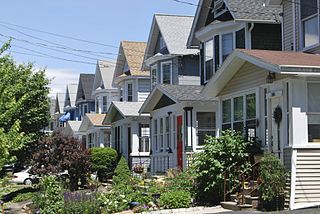
Albany is the capital and oldest city in the U.S. state of New York, and the seat of and most populous city in Albany County. It is located on the west bank of the Hudson River, about 10 miles (16 km) south of its confluence with the Mohawk River.
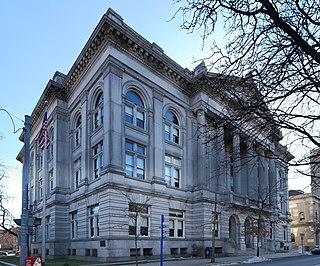
Rensselaer County is a county in the U.S. state of New York. As of the 2020 census, the population was 161,130. Its county seat is Troy. The county is named in honor of the family of Kiliaen van Rensselaer, the original Dutch owner of the land in the area. The county is part of the Capital District region of the state.

Troy is a city in the United States state of New York and is the county seat of Rensselaer County, New York. It is located on the western edge of that county on the eastern bank of the Hudson River just northeast of the capital city of Albany. Troy has close ties to Albany, New York and nearby Schenectady, forming a region popularly called the Capital District.
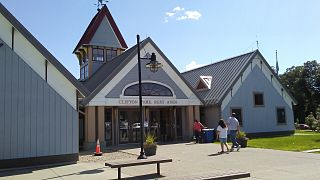
Clifton Park is a suburban town in Saratoga County, New York, United States. It is the largest municipality in the county, with a 2020 population of 38,029, according to the 2020 census. The name is derived from an early land patent. The town is in the southern part of Saratoga County, approximately 12 miles (19 km) north of Albany, 7 miles (11 km) northeast of Schenectady, and 10 miles (16 km) south of Saratoga Springs.
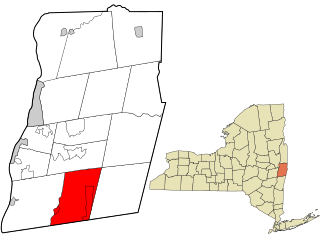
Nassau is a town in Rensselaer County, New York, United States. The population was 4,545 in 2020, down from 4,789 at the 2010 census.
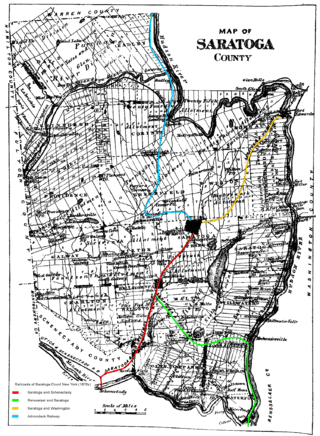
The Rensselaer and Saratoga Railroad was a railway company that operated in the states of New York and Vermont in the 19th century. At its peak it controlled a 150-mile (240 km) network. The Delaware and Hudson Railway leased the company in 1871 and formally merged it in 1945.

The Capital District Transportation Authority (CDTA) is a New York State public-benefit corporation overseeing a number of multi-modal parts of public transportation in the Capital District of New York State. CDTA runs local and express buses, including four lines of an express bus service called BusPlus, and day-to-day management of three Amtrak stations in the Capital region–the Albany-Rensselaer, Schenectady and Saratoga Springs Amtrak stations. In 2023, the system had a ridership of 15,779,000, or about 55,100 per weekday as of the first quarter of 2024.

Area codes 518 and 838 are telephone area codes in the North American Numbering Plan for eastern Upstate New York in the United States. 518 is one of the 86 original North American area codes created in 1947. Area code 838 was added to the 518 numbering plan area in 2017. The two area codes serve 24 counties and 1,200 ZIP Code areas in a numbering plan area (NPA) that extends from the eastern Mohawk Valley to the Vermont border, and from the Canada–US border to south of Albany. The bulk of the population is in the Capital District, the vicinity of the cities Albany, Schenectady, and Troy. Other cities in the NPA are Glens Falls, Plattsburgh, and Saratoga Springs. It includes the Upper Hudson Valley counties, Greene and Columbia counties, and some northern parts of Dutchess County.

Ernest Harold Cluett was an American businessman and politician from Troy, New York. A Republican, he was most notable for his service as a United States representative from 1937 to 1943.
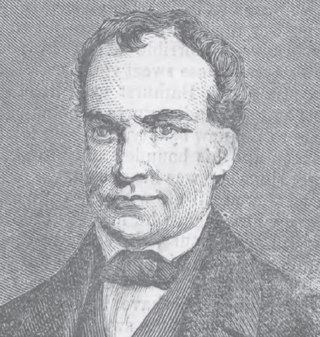
Gardner Stow was an American lawyer and politician who served as New York State Attorney General.

Oakwood Cemetery is a nonsectarian rural cemetery in northeastern Troy, New York, United States. It operates under the direction of the Troy Cemetery Association, a non-profit board of directors that deals strictly with the operation of the cemetery. It was established in 1848 in response to the growing rural cemetery movement in New England and went into service in 1850. The cemetery was designed by architect John C. Sidney and underwent its greatest development in the late 19th century under superintendent John Boetcher, who incorporated rare foliage and a clear landscape design strategy. Oakwood was the fourth rural cemetery opened in New York and its governing body was the first rural cemetery association created in the state.
The history of Albany, New York, began long before the first interaction of Europeans with the native Indian tribes, as they had long inhabited the area. The area was originally inhabited by an Algonquian Indian tribe, the Mohicans, as well as the Iroquois, five nations of whom the easternmost, the Mohawk, had the closest relations with traders and settlers in Albany.
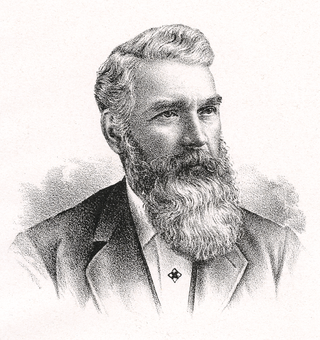
Joseph H. Allen was an industrial businessman, an officer in the Civil War, and a town supervisor[a] of Brunswick, New York. Allen was born in Alburg, Vermont, to parents of British descent and left home at an early age. After several business ventures, he became successful in the auger and hoe business, selling mainly to the American South. He successfully ran for supervisor of the Town of Brunswick in 1856 and justice of the peace in 1861. At the beginning of the Civil War, his sales plummeted so he closed his business and enlisted in the Union Army. Allen was wounded multiple times during his service and ended his career at the rank of lieutenant colonel. He returned home to reopen his factory, which was instrumental to the industrial success of the hamlet of Eagle Mills in the mid to late 19th century. He died in 1884 at the age of 62.

The coat of arms of Albany, New York, is the heraldic symbol representing the city of Albany, the capital of the U.S. state of New York. The coat of arms is rarely seen by itself; it is almost always used in the city seal or on the city flag. The current coat of arms was adopted in 1789, although prior to that it was significantly simpler, ranging from stylized lettering to a caricature of a beaver. Included in the coat of arms are references to Albany's agricultural and fur-trading past. It is supported by a white man and an American Indian and is crested by a sloop. The coat of arms is meant to represent the "symbols of industry and its rewards to man and beast on land and sea".
The following is a bibliography of New York. New York is a U.S. state in the Mid-Atlantic region of the Northeastern United States. New York is commonly known as the "Empire State" and sometimes the "Excelsior State". It is the nation's third most populous state at over 19 million people. The capital of the state is Albany and its most populous city is New York City. New York is often referred to as New York State to distinguish it from New York City.

The history of Albany, New York prior to 1664 begins with the native inhabitants of the area and ends in 1664, with the English takeover of New Netherland. The area was originally inhabited by Algonquian Indian tribes and was given different names by the various peoples. The Mohican called it Pempotowwuthut-Muhhcanneuw, meaning "the fireplace of the Mohican nation", while the Iroquois called it Sche-negh-ta-da, or "through the pine woods". Albany's first European structure was a primitive fort on Castle Island built by French traders in 1540. It was destroyed by flooding soon after construction.
The history of Albany, New York from 1664 to 1784 begins with the English takeover of New Netherland and ends with the ratification of the Treaty of Paris by the Congress of the Confederation in 1784, ending the Revolutionary War.
Burton Deyoe Esmond was an American lawyer and politician from New York.
Chauncey Boughton was an American physician and politician from New York.
References
- 1 2 Brodhead 1874 , p. 744
- ↑ Chisholm, Hugh, ed. (1911). . Encyclopædia Britannica . Vol. 01 (11th ed.). Cambridge University Press. pp. 487–489, see page 487.
- ↑ Leslie 1888, p. 354
- ↑ Grade 7, Altamont Grade School (1946). "History of Altamont". Village of Altamont. Retrieved 2011-08-03.
{{cite web}}: CS1 maint: numeric names: authors list (link) - 1 2 3 4 5 6 7 8 9 10 11 12 13 14 15 Zurlo, Sam (15 April 1996). "Area place names reflect local history and personalities". Daily Gazette . Schenectady, N.Y. pp. B5. Retrieved 5 March 2016– via Google News Archive.
- ↑ Masters, Hillary. "Town of Ancram, NY History". Town of Ancram. Retrieved 2011-08-03.
- ↑ "Bits and Pieces of Saratoga County History" by Richard Dorrough published in the Ballston Journal. Copies of the original documents in Dorrough's possession.
- ↑ Old Dutch Place Names from www.ancestry.com.
- ↑ "Development of the Coxsackie Quadrangle, New York". New York State Museum Bulletin (332–337). Albany, N.Y.: State University of New York: 40. 1943. Retrieved 16 February 2016– via Google Books.
- ↑ "Our Lady of Fatima Church: Delanson, NY". Roman Catholic Diocese of Albany . Retrieved May 13, 2017.
- ↑ "History of Green Island - A Partial Timeline" (PDF). Ancestry.com . Retrieved February 15, 2016.
- ↑ Sylvester, Samuel Bartlett. "History of Saratoga County". Rootsweb. Retrieved December 14, 2015.
- ↑ "History". Village of Philmont, New York. Retrieved February 16, 2016.
- ↑ Weise 1880 , p. 90
- ↑ Three Rivers. "Which came first?". Berry Enterprises. Retrieved 5 March 2016.
